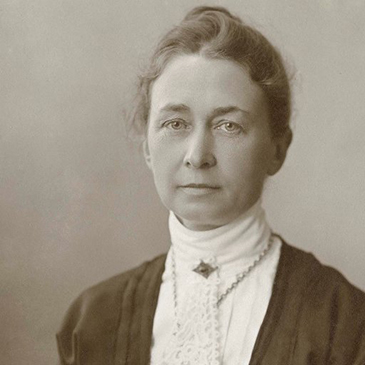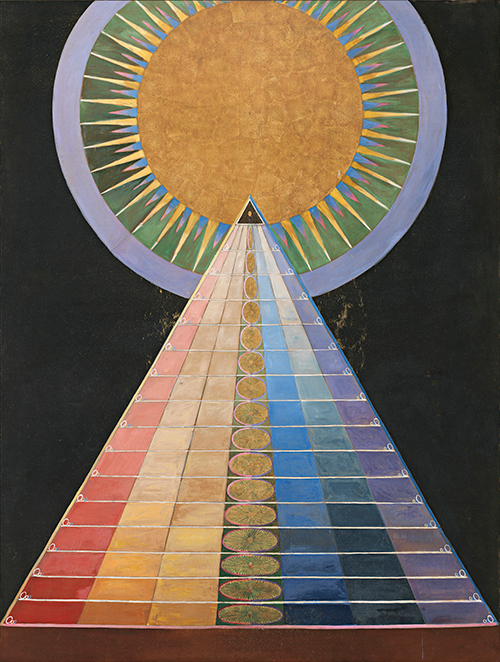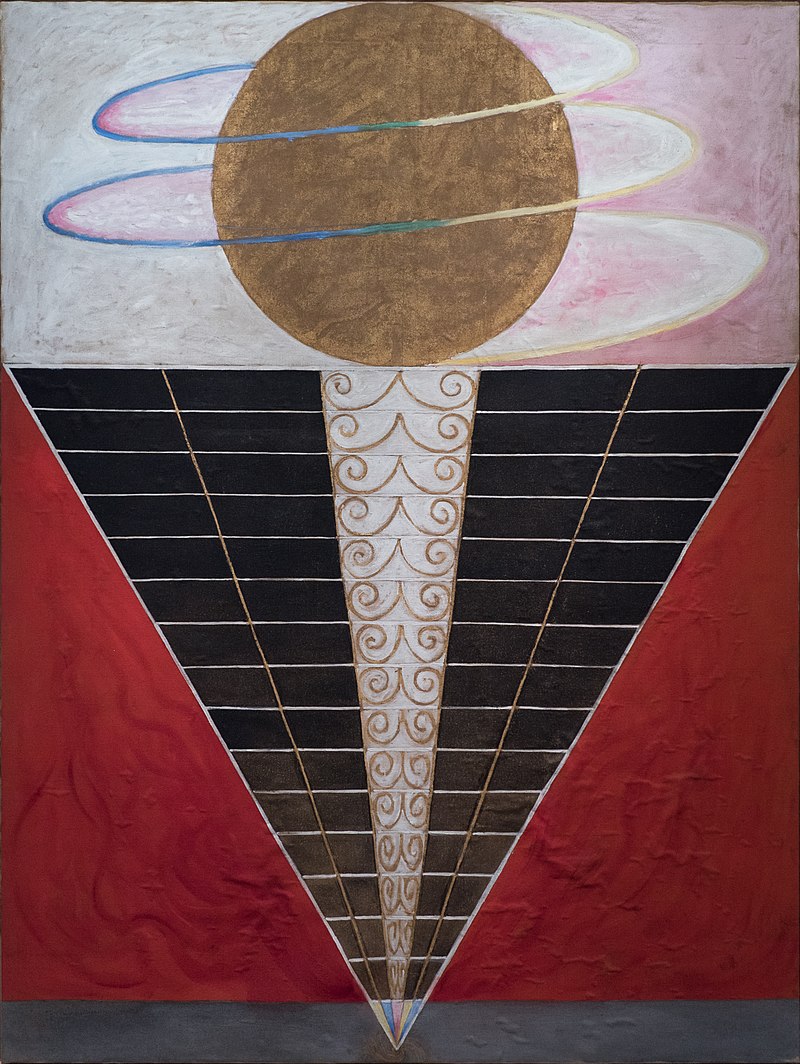The collection by Hilma “Paintings for the Temple” encompasses 193 paintings, subdivided into several series and sub-groups. It is one of the very first pieces of abstract art in the Western world, as it predates with several years the first non-figurative compositions of her contemporaries in Europe.
Klint shared a fascination with the spiritual with another modern pioneers in abstract art: Wassily Kandinsky, Kazimir Malevich, Piet Mondrian, and František Kupka among others. All of them wanted to surpass the constraints of the physical world. Unsurprisingly, many were attracted to Theosophy, as its ideas suggested an attractive alternative to the exact static principles of academic art. The abstract, non-figurative artwork opened up a radically new way of expression. As opposed to depicting a mere visual impression, they aimed at finding a new route, reaching for a spiritual reality. Every one of them found his, or her, own private way into abstract painting.
There's not any proof that Klint was involved from the abstract motion of her modern male colleagues, nor that she engaged in the creation of early Modernism in Central and Western Europe. Nevertheless, she devised a similar, non-representational aesthetics. The contact with spiritual guides, who inspired her and communicated with her, was for Klint as real as the impressions given by the five physical senses. By visualizing inner experiences and processes, and by describing those as concretely and precisely as possible, she proceeded to develop very personal expression.
Hilma was convinced that fact isn't restricted to the mere physical world; she was convinced that in parallel with the material world lies an internal one and that the contents of the interior dimensions are just as real and true as are those of the outer one. To communicate this message, Hilma made use of symbols, words and letters. By way of employing dualistic symbols, Klint expressed that "Everything is Unity".
When Klint passed away in the fall of 1944, she left around 1300 non-figurative paintings which had never been proven to outsiders, and over 125 notebooks and sketchbooks. In her will, Hilma Af Klint specified that her life's work ought to be kept secret for at least 20 years after her death. Her last wish was also the collection should not be split up.



